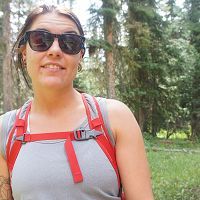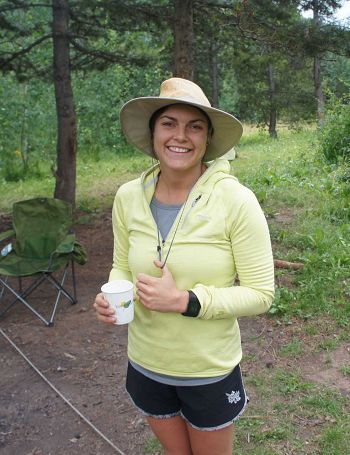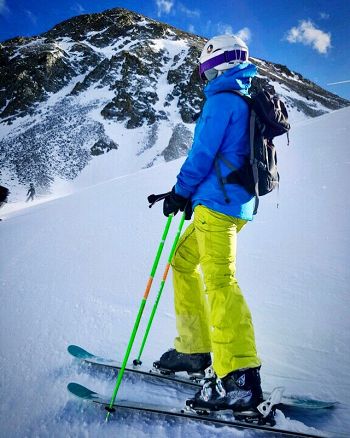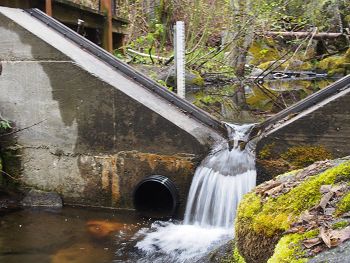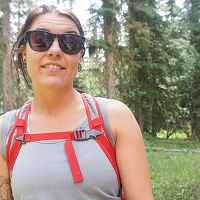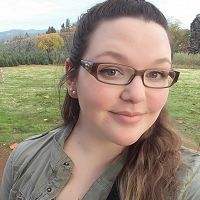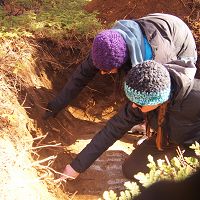Researcher Spotlight: Caitlin Collins
Researchers from Southern Sierra Critical Zone Observatory work in several disciplines and come from a variety of backgrounds. They all have their own story to tell. Take a look at this month's researcher spotlight Caitlin Collins, graduate student researcher at the Colorado School of Mines, and learn about her work in the field of critical zone science!
Q&A between Madeline Castro and Caitlin Collins
What is your field of interest/research? How did you become interested in this topic?
My field is hydrology; specifically, computational watershed hydrology. I first became interested in general hydrogeology during my geology undergrad at CU Boulder. Living in Colorado, I spend most of my free time skiing or hiking in the Rockies. After years of recreationally interacting with mountain hydrology first hand, pursuing a more technical career in hydrology was a no brainer for me. I became interested in mountain watershed modeling during my first semester of graduate school at the Colorado School of Mines.
What CZOs have you conducted research at? What kinds of research did you do there?
My research involves running computational hydrology experiments of the Providence Creek watershed at the SSCZO. Using a physically-based, integrated modelling approach, my research aims to bridge the gap between point observations and spatial complexity of hydrologic fluxes, bracket evapotranspiration (ET) estimates, and explore the role of lateral groundwater flow on the drought-tolerance of montane vegetation.
What do you feel is the most exciting part of your research?
My favorite aspect of what I do is presenting my research. Effective scientific communication is incredibly important. Communicating my research over the last few years has been one of the most challenging but most rewarding aspects for me.
Why is your field of study important?
Mountain headwaters are vulnerable to change. Changing climate will continue to alter these delicate systems. Observations in these systems are challenging and difficult to scale. Integrated, physically-based models are tools to dissect the driving mechanisms of hydrologic fluxes, such as evapotranspiration (ET). Understanding mountain vegetation water use is an essential component for predicting vegetative response to stress, such as drought.
What you are most proud of in your research and/or academic/career experiences?
I am most proud of defending my masters thesis this month and sharing my research at my first AGU talk last year.
What is your favorite part of the Critical Zone and why?
My favorite part of the critical zone is water because it involves all of the other aspects of CZO research: rocks, soil, vegetation.
Edited by Michelle Gimore
Photo provided by Ms. Collins
Photo provided by Ms. Collins
Provided by the Southern Sierra Critical Zone Obervatory
News Category:
RESEARCH |
PEOPLE |
EDUCATION/OUTREACH |
OPPORTUNITIES
Photos
SSCZO - Water Balance Transect
Within the headwaters of the P301 catchment is a series of montane meadows. The P301 water balance transect is comprised of monitoring wells, piezometers, soil sensors, and meteorological sensors.
A photo gallery of the P301 water balance transect can be found here.
People Involved
CZO
-
Sierra, GRAD STUDENT
-
Sierra, STAFF
-
Sierra, UNDERGRAD
-
Sierra, COLLABORATOR
-
Sierra, COLLABORATOR
Publications
2017
Elucidating Critical Zone Process Interactions with an Integrated Hydrology Model in a Headwaters Research Catchment. Collins, C.; Maxwell, R.M. (2017): H43S-07
Explore Further
